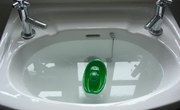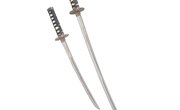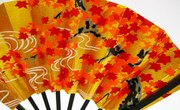A bayonet is any spiked-shaped weapon such as a knife, dagger or sword designed to fit over the muzzle of a rifle barrel, turning a gun into a spear.
Bayonets provide a useful addition to rifles when an enemy charges and comes in close contact. It could be used as a closed-combat weapon or a last-resort weapon.
Bayonets can be identified according to the country of origin or through its blade length, although the latter is easier to use.
Know the basic bayonet terminologies. Familiarize yourself with the basic parts and proper names to describe them. There are three types of bayonets, namely, the plug bayonet, socket bayonet and sword and knife bayonets. Each of this type has its own unique features.
Identify which type your bayonet falls under. It may either be a plug if it resembles a dagger, which has a round handle that slid directly into the musket barrel. A socket bayonet, on the other hand, has a triangular blade in cross-section. It has a socket and a ring where it is attached to a rifle. Sword and knife bayonets were used in later centuries. They are made of a single- or double-edged blade that could be used as a short sword. Sword bayonets were popularly attached to “Baker Rifles.” However, it usually needs to be removed before firing because it can affect the stability and balance of the whole rifle.
Measure the whole length of the blade using a tape measure. Allow a couple of millimeters allowances as tape measure and human eyes vary.
Scan the bayonet guide table for the nearest blade length. Look for markings indicating where the bayonet was manufactured. The three-letter abbreviation following the length in millimeters indicates the country of manufacture.
Identify if the bayonet is original, a fake/reproduction or fantasy. Refer to the "Fake, Reproduction or Fantasy" guide in Resources below.
Measure the blade length and not the length of the whole bayonet.
For better identification, provide clear photos of bayonet with the sheath removed and the whole blade exposed.
Consult a trusted bayonet dealer and have your bayonet identified as genuine or replica.
Markings such as misplaced serial numbers, signs of welding and machine cross-hatching, wrong country of manufacture indicate that a bayonet is fake.
Related Articles
Writer Bio
Based in Northern California, Sue Teresa Tan has been writing essays and journal entries during her free time since 2001 when she retired from work as a business owner. Her favorite topics to write about are arts and crafts, fashion, health, and travel. She holds a Bachelor of Arts in archeology from the Universite Des Beaux-Arts in Cambodia. Her work has been featured on eHow.










